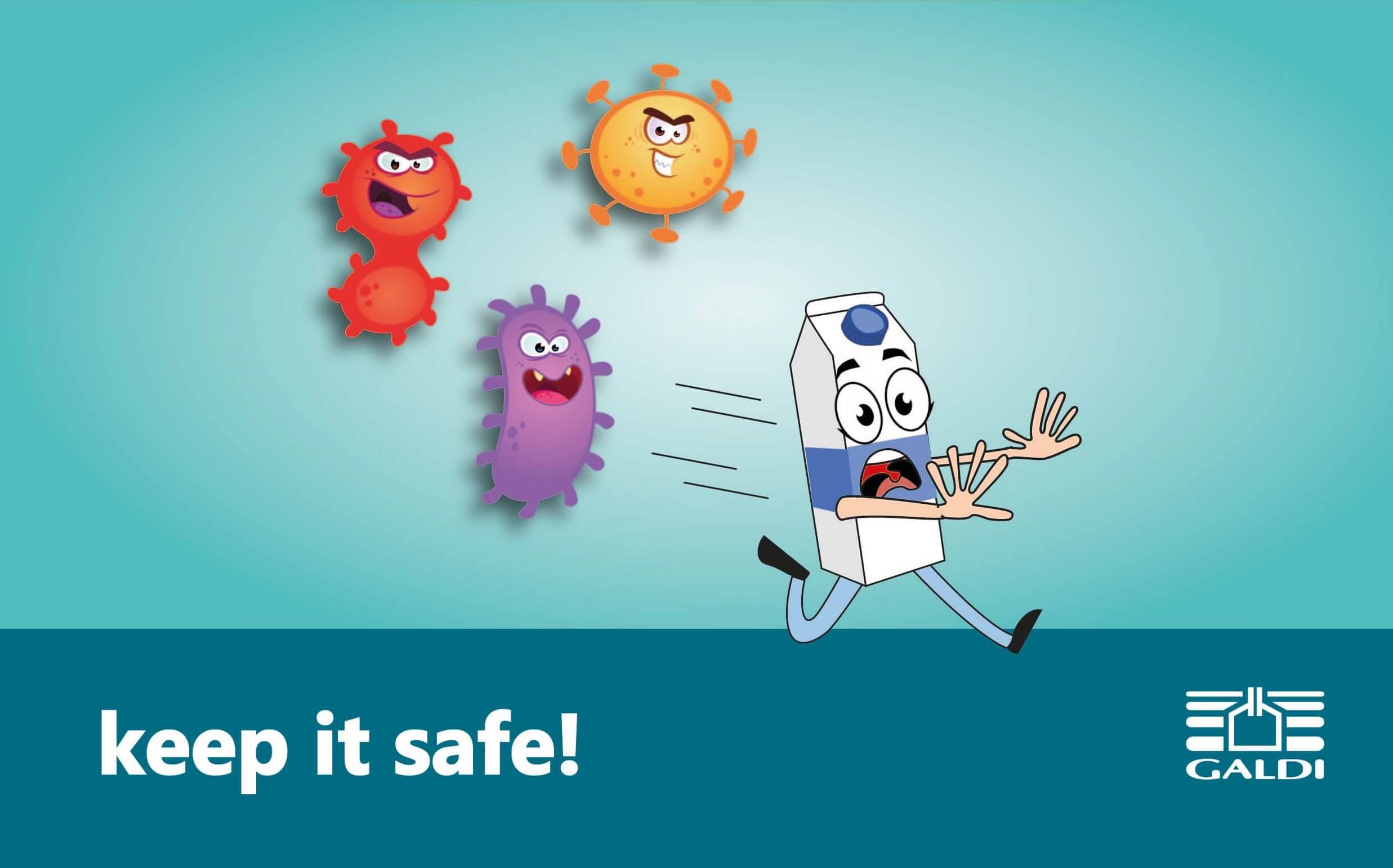Cleaning and ATP Testing for Filling Machines: Safety First
With FILL good's support, Galdi is introducing a new cleaning and ATP testing service for fillers, to be performed prior to shipping

The cleaning validation of packaging machines after testing is a novelty for customers wishing to begin production in the safest possible way.
This service, offered by default for machines filling mineral water in gable-top cartons, is now available for all delicate and extended shelf-life (ESL) products.
It is especially suited for Galdi Ultra Clean-configured packaging machines and is suggested for food products such as:
● ESL milk
● plant-based drinks (soy milk, rice milk, etc.)
The idea is part of a broader picture, as Galdi's ultimate goal is to become a partner offering a full package to customers. Along with machines, we strive to provide support in every step of the way, from packaging type selection to end-of-line solutions.
It also falls within the scope of our projects promoting food safety, which address a number of aspects, from design to guidance on how to prevent contamination in production environments.
EVERYTHING YOU NEED TO KNOW ABOUT ATP TESTING FOR FILLERS
Those in the food industry are certainly familiar with ATP.
The acronym stands for Adenosine Triphosphate, an essential molecule for all living beings, as it is linked to cellular energy production.
It is therefore an indicator of the presence of organic mass in products and on surfaces.
That's why ATP tests are performed in all environments in which hygienic safety is essential, like hospitals, professional kitchens and, as mentioned earlier, food manufacturing sites.
To conduct ATP tests on fillers, we use swabs to collect samples on different surfaces, which are then put in contact with a reagent for enzyme assay.
Finally, an ATP measuring device or Bioluminometer provides the RLU (relative light unit) value, needed to identify and quantify potential bio-contamination sources or to certify the absence of bacterial load.
Though not mandatory for food packaging machines, the test should be performed at least once a year to avoid that sedimented bacteria create a biofilm, a persistent form of contamination which is difficult to remove.
It is also recommended to perform it after any process change, for example when starting a business partnership with a new chemical products supplier.
Though expensive and time consuming, following these procedures is well worth it in the long term.
By preventing contamination, the following can be avoided:
- product loss
- withdrawal from sale
- food waste
- image damage
- downtimes (identifying causes and repeating tests can take a long time)

CLEANING VALIDATION FOR FILLERS
The cleaning validation process for fillers proposed by Galdi, inclusive of ATP tests, consists of three steps:
- CLEANING
Before transportation, our technicians run both CIP (Cleaning In Place) cycles, using soda and acid solutions, and SIP (Sanitation In Place) cycles for parts in direct contact with the product.
For automatic sanitation, hot water (95°C) is used instead of peracetic acid.
The above two phases eliminate organic residues and microbial load. Manual sanitation follows for parts that are not in direct contact with the product, like spindle bases.
This action is just as important, since ATP is also measured in areas which the SIP system cannot reach.
Experience in cleaning operations is paramount. And this is where Galdi technicians make the difference. To clean a packaging machine so that it passes the ATP test, you have to know its most critical areas, like the rubber nozzle, i.e. the end part of the doser, which could retain drops of liquid.
It is precisely for this reason that we are preparing specific training sessions on cleaning procedures for operators, to be held during the installation phase, in conjunction with maintenance work or through webinars.
- ATP TESTS
At Galdi we perform ATP tests on packaging machines before and after cleaning, analyzing data in our in-house microbiology lab.
To determine tolerance limits, we have set the following key parameters, based on the Bioluminometer currently in use:
Parts in direct contact with the product:
- between 0 and 150 RLU - Pass score
- between 150 and 250 RLU - Caution threshold
Parts not in direct contact with the product:
- up to 250 RLU - Pass score
- between 250 and 350 RLU - Caution threshold
In case of a Fail score or if the result is close to the limit, CIP and SIP cycles must be repeated and possible causes (unsuitable sanitizer, improper cleaning, etc.) identified.
- REPORT
At the end of the procedure, the customer receives a detailed report certifying the cleaning validation of the filling machine. After CIP and SIP cleaning cycles have been run by our installation technician, production can begin quickly and safely.
If you want to find out more about our new cleaning and ATP testing service for filling machines, contact Ilaria Trento (FILL good).
